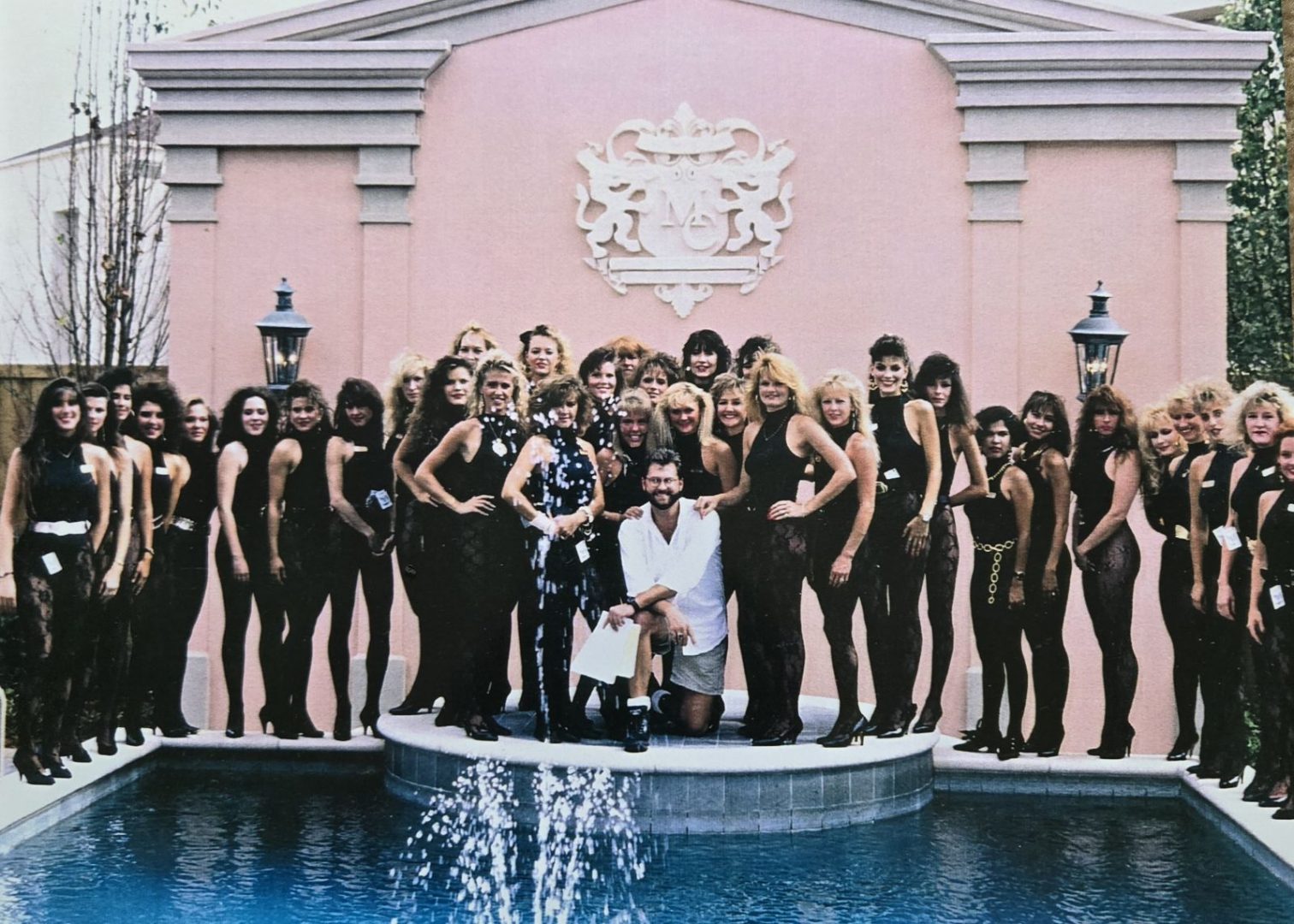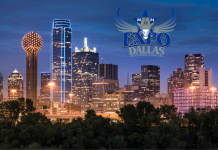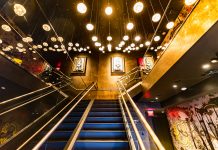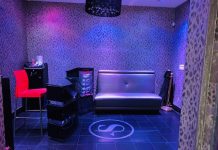Though it’s been some time since he’s worked in our industry, Stephen McWilliams has nevertheless left a lasting impression, not only on the Dallas Metroplex’s clubs but on the industry at large. McWilliams’ talents and experience in restaurant management and hospitality led to his inclusion in the establishment of such legendary Dallas clubs as Cabaret Royale and The Men’s Club. Here, McWilliams discusses his role in opening and operating some of the most opulent venues that this industry has ever seen.
(NOTE: This story appears in the September 2024 issue of ED Magazine.)
Few people were as ensconced in the “heyday” of Dallas adult nightclubs as much as Stephen McWilliams. An accomplished restaurateur and “corporate opener,” McWilliams owned and operated his own business when he was first approached to manage an adult club. Soon, he found himself working with some of the industry’s most successful owners and opening what would become some of the most thriving clubs not only in Dallas but in the entire US, including Cabaret Royale and The Men’s Club.
ED Magazine Legal Correspondent Larry Kaplan spoke to McWilliams about the growth of the “upscale gentlemen’s club” in the Dallas Metroplex, and why Big D was the perfect area for clubs of this type to open and flourish.
ED: When and how did you initially get started in the adult nightclub business?
MCWILLIAMS: I’d never even thought about being in the topless business, I was a restaurant guy. I worked for Norman Brinker, who had Steak and Ale and Bennigan’s. Bennigan’s was growing quickly; I was a corporate opener, going around and opening new locations every four months. By the time I was 27, I thought I could go out and start my own business, which I did. It was a hospitality consulting company named The 3 P Group (Package, Promote and Profit). I did a few small jobs but wasn’t ready to compete with more experienced operators. I needed a consistent job.
A bartender friend told me the topless place he worked at was hiring managers. That’s when I met Dallas club owner Randy Dumas. He was the first guy I worked for in the adult business at Geno’s Southern Belles. He had several other clubs, including the Dallas Gentlemen’s Club, which is still open.
Southern Belles was a cinder block building catering to a blue-collar crowd on Harry Hines Boulevard. I learned a lot about the industry then, exited quickly, and went right to work for Rosewood Hotel Group.
You walked into the marble lobby with wrought iron stairs and into the club, and the side stages weren’t side stages; they were mini-grand pianos.
– Stephen McWilliams
While I managed Rosewood’s Crescent Club, Salah Izzedin, an owner at Rick’s in Houston, came to Dallas to look for an expansion location. When he arrived as a guest, we met and conversed. He said he was there to build this fabulous new club. I had no idea what Salah had in mind because I’d never seen anything like it. And I had no point of reference to his vision because those clubs didn’t exist then.
I agreed to join him in looking at a location. When he offered me a job, I said I’ve got this perfect job with Rosewood; I didn’t want to leave it. He said, “Maybe you can do some consulting for me.” I told the VP of Rosewood that I was considering taking a consulting position. He said he didn’t foresee any conflict of interest if I didn’t do anything against their business. Three weeks later, Salah applied for his liquor license; the location was to be called Rick’s Mansion. Rosewood owned The Mansion on Turtle Creek. Their lawyers saw Salah apply and didn’t want the Mansion in any way associated with the topless business; So, Salah came to me and explained that we had to create a new name.
Salah had been comparing his club concept to a European cabaret, so I came up with the name Cabaret Royale, which just clicked. So, we got the license and built the club. Two months after the club opened, the Dallas Fort Worth Business Journal wrote about me working at Rosewood and for Cabaret Royale; that was the end of my relationship with Rosewood. That day, I began working full-time at Cabaret Royale.
When Salah opened Cabaret, the only other big gun in Dallas was the Million Dollar Saloon. Everybody talked about the Million Dollar Saloon. It was a stage club without table dancing; the girls paraded. It had a continuous stage; the girl performed on the main stage, but then there was a walkway that was a continuing stage. One girl would come down, and then the girl on stage would proceed to the next area. The customer looked around and saw 10 or 12 girls in different positions on a stage around the club or up in the VIP area.

There wasn’t table dancing, per se, until Cabaret opened. Salah had the oddest but most intriguing idea. Our chairs were the drum chairs, and underneath each was a pedestal. It stood 12 inches high and was nine inches wide across on top, and they slid out from underneath the chairs. We didn’t call it table dancing; it was pedestal dancing. And that was what started the $20 pedestal dance. I was fascinated by this whole thing, and I still look back with pride and astonishment because I was there from the very beginning.
When Cabaret opened, it had three heavy-hitter managers: Brian Paul, who’d managed Rick’s in Houston, Frank Caspersen from Fantasy Ranch and Chris Burt, who managed Million Dollar. I was the Director of Operations. The three knew how to manage girls and shmooze with customers in that environment, while I knew how to run the office, train people, write manuals and the like. The club was a powerhouse.
I remember opening night; rich Dallas people used to opulence and beautiful facilities with top-notch service loved this new experience. You walked into the marble lobby with wrought iron stairs and into the club, and the side stages weren’t side stages; they were mini-grand pianos. That set us apart right there. We had unbelievable mainstage shows. A guy actually brought an elephant on stage once with topless entertainers. We did some of the craziest over-the-top events; it was a cabaret, a true showroom.
Soon after, David Fairchild and Kent Stephens of the Houston Men’s Club decided to enter the Dallas market. They hired Brian Paul away from Cabaret to open the Dallas Men’s Club. I had left Cabaret and was living in Washington, DC, at the time, working for Sutton Place Gourmet grocery chain, opening new locations in Baltimore and then Manhatten. Brian called and asked if I’d come back and help. I said I needed to think about it, but Brain was very convincing.
That’s why we call the entertainers topless entertainers, not strippers. Just referring to dancers as an entertainer versus a stripper elevates the perception and presentation.
– Stephen McWilliams
Soon after that, Brian, David Fairchild and I were out in the field, spray painting the design of The Men’s Club on the ground. We detailed and visualized where the main stage would be. Then the kitchen, dressing room, boutique, pool and patio. We officed in the Southern Kitchen, an old restaurant on the property. We hired and trained over 100 new employees and hosted a spectacular opening.
Cabaret’s opening was good, but we learned from that, and when we opened The Men’s Club, there were lines out into the street for the first week. And the pool and patio were full of people because nobody had seen a club like this. We had large windows with unobstructed natural lighting and topless girls swimming in a beautiful pool. I mean, this was decadent to decadence. By then, Million Dollars still had a reputation, but it had declined to a B-level club after being “the club” two years earlier. But then Cabaret Royale and The Men’s Club emerged, set a new standard of excellence, and everything else became secondary.

ED: When did you first start to see an “evolution” in the Dallas Metroplex’s adult clubs, away from the roadhouse-type strip clubs to a more upscale club environment?
MCWILLIAMS: It never evolved; it just delineated. You had higher-end clubs, Cabaret, Men’s Club, The Lodge and Silver City. You still had the Harry Hines Boulevard style clubs, Lipsticks, Babes and the like, which was fine. Still, all the clubs did their own thing, their own way, which was part of the reason why the TEA (Texas Entertainment Association, a precursor to ACE) was formed to open dialogue between club owners to help identify standards of operation that would help in relationships with city government and law enforcement.
Basically, there was a distinction between three levels. There was Cabaret, The Men’s Club and the other upscale clubs with high sales and good reputations that were referred to as gentlemen’s adult entertainment facilities; there were the traditional topless clubs, and then you had Burch Management’s Baby Dolls, an entity unto itself, consistently outselling everybody.
ED: In 2000, ED Publications named the Dallas Metroplex the number-one adult nightclub market in the US. If indeed it was, what made it number one?
MCWILLIAMS: The Dallas Fort Worth Metroplex had more clubs because we had more land mass. In Dallas, you had bankers and real estate guys. In the mid-cities, there was a large labor force, and Fort Worth had cowboys that frequented the bars. Where you have money, you have beautiful women. I haven’t been involved in the topless industry for many years. As a casual observer today, I wouldn’t argue that Dallas wasn’t number one, but I would debate that Dallas and Houston were almost equal. As a state, Texas is a topless club state. It’s just in our DNA; make some money, drink some beer, do some tequila shots, go to a titty bar. That’s kind of how it always was and is. After Friday Night Lights, the boys grew up, and their games changed, but it’s still about girls.
In the evolution, Dallas had Cabaret, The Men’s Club, The Lodge and Silver City; in Houston, you had Rick’s, Treasures, Gold Club and several other big clubs. All of us kind of ran our businesses the same with high-quality girls, good service and quality products in a nice environment, and we didn’t ever act like it was a titty bar. That’s why we call the entertainers topless entertainers, not strippers. Just referring to dancers as an entertainer versus a stripper elevates the perception and presentation. And it was just a whole different approach to entertainment. For example, many clubs, like The Men’s Club, didn’t have poles on stage for the first 10 to 15 years.
The Men’s Club just did close to a million-dollar upgrade; it looks like a Vegas/European showroom. I was talking with David about it at the 30th anniversary. I remarked that the original design was spectacular for its time, and now it is even more spectacular for the current time. I asked if customers still wanted this, what with the internet and all the other options. He replied that people with money do care. You have fewer customers, he explained, but they’re still spending more money and want to be catered to.
When Cabaret opened, it had three heavy-hitter managers: Brian Paul, who’d managed Rick’s in Houston, Frank Caspersen from Fantasy Ranch and Chris Burt, who managed Million Dollar. I was the Director of Operations. The three knew how to manage girls and shmooze with customers in that environment, while I knew how to run the office, train people, write manuals and the like. The club was a powerhouse.
– Stephen McWilliams
ED: As a casual observer, would you care to make any observations of what you foresee regarding changes in the Dallas adult nightclub market in the next five years?
MCWILLIAMS: Dallas made a misstep when it played hardball by denying a liquor license to an adult club several years ago. That club opened as a nude BYOB and has a track record of far more criminal activity and notable violence than topless clubs in the same area. Topless is so much easier to monitor. A liquor license gives the state far more control. I think the city learned its lesson, so I believe, in the future, you’re going to see less of the totally nude BYOB’s and more topless clubs that cater to various niche markets. In Texas, the topless industry knows how to cater to a wide variety of clientele.
Larry Kaplan has been the legal correspondent for ED Magazine for 25 years. Mr. Kaplan is a broker in the sales and purchase of adult nightclubs and adult retail stores and the Executive Director of the ACE of Michigan adult nightclub state trade association. Contact Larry Kaplan at 313-815-3311 or larry@kaplanclubsales.com.



























